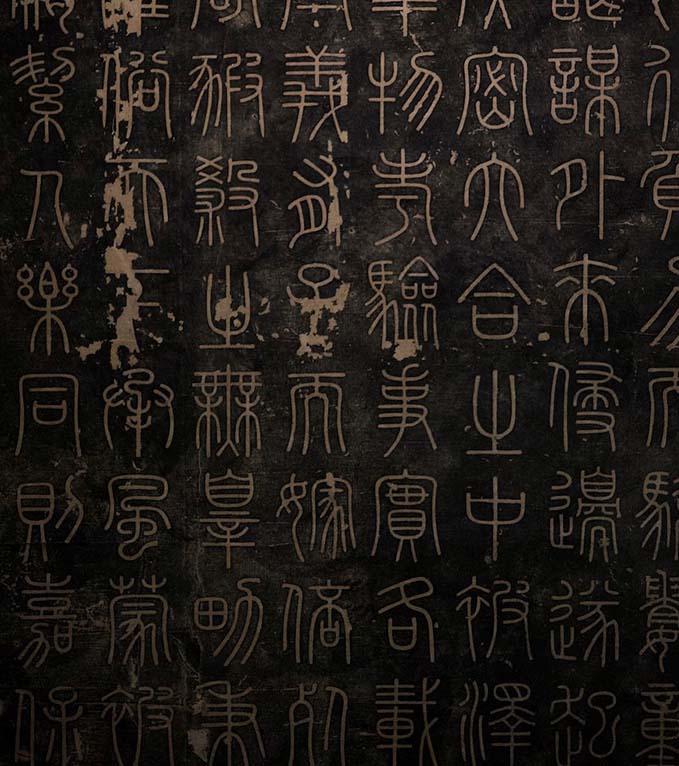What is Chinese?
According to Statista, in 2022, Chinese ranked as the second most-spoken language worldwide—1.3 billion speakers strong. Chinese characters form a unique writing system that is different from other writing systems.
Unlike other languages, Chinese characters do not represent single letters. A character can represent a syllable or an entire word. As for the number of characters in existence, it can be challenging to get an accurate estimate. But if we rely on the HSK as a metric, the new HSK 9 lists an astounding 11,000 characters.
| The HSK (Hanyu Shuiping Kaoshi) is a Chinese proficiency test aimed at non-native Chinese speakers to test their level of Chinese fluency. It is similar to the TOEFL for English. |
Throughout its 4,000 years of history, Chinese characters have steadily evolved and morphed. As of 1956, the Chinese government has accelerated this evolution by reforming the written structure of the language. It established the Scheme for Simplifying Chinese Characters as the official guiding rule. This policy’s guiding principle was to simplify and improve the characters’ elegance steadily.
Some ancient characters can be challenging to understand and memorize, which acts as barriers to the language’s adoption. With the reformation, the language became easier to grasp, and for Chinese learners, especially children, it improved adoption rates.
What is Traditional Chinese?
As the name indicates, Traditional Chinese is the historical or traditional way of writing Chinese characters. It has been in use for thousands of years and compared to the more modern Simplified Chinese, it can be a complex writing system. Even in modern-day China, it is still used in three regions: Hong Kong, Taiwan, and Macau.
What is Simplified Chinese?
Simplified Chinese is the most used version of the Chinese writing system. As the name indicates, it is based on Traditional Chinese characters that were simplified. Nowadays, it’s the writing type most foreigners will ever come across. For instance, if you had the chance to go to mainland China, you undoubtedly came across some street signs like the one below.
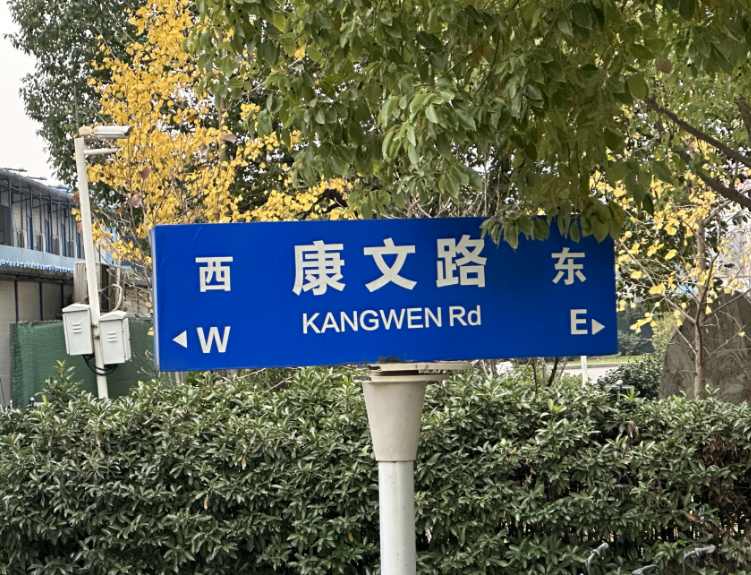
This sign and all other similar ones are written using Simplified Chinese characters. In China, public signs are legally obligated to be written in Simplified Chinese (Article 13 of the Law of the People’s Republic of China on the Standard Spoken and Written Chinese Language).
Traditional vs Simplified Chinese
The image below compares a Simplified Chinese and Traditional Chinese character. It shows two versions of the horse character. Although the shape and structure look similar, the traditional character 馬 has more strokes than the simplified 马. As you can see, the simplified version is easier to read and write, making it easier to learn and use.
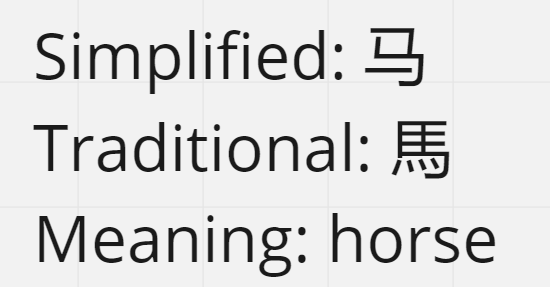
Some principles to simplify Traditional Chinese into Simplified Chinese:
- Omitting entire components. For instance, changing 飛 into 飞 (meaning “fly”).
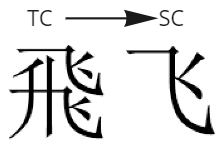
- Preserving the outline of the character but simplifying other parts. For instance, changing 繼 into 继 (meaning “continue”).
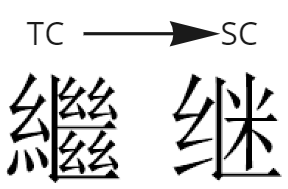
- Simplifying one part of the character but keeping the other parts. For instance, changing 對 into 对 (meaning “right”).
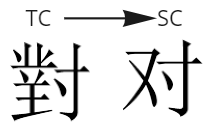
- Changing the obscure ancient forms of characters. For instance, changing 塵 into 尘 (meaning “dust”).
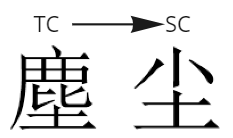
That being said, sometimes these changes are not purely cosmetic. When 后 is in 皇后 or 太后 (the wife of a monarch), the simplified character remains the same as the traditional one. But, when 后 is in 然后 or 后来 (then), the character should be changed into 後.
Example 1
| Simplified | 他们在谈论中国历史上的皇后。 |
| Traditional | 他們在談論中國歷史上的皇后。 |
| Meaning | They are talking about the wife of a monarch in Chinese history. |
Example 2
| Simplified | 他走进教室环顾了一下,然后坐了下来。 |
| Traditional | 他走進教室環顧了一下,然後坐了下來。 |
| Meaning | He entered the classroom, looked around, then sat down. |
Now that we have clarified the principles used to transform characters from Traditional to Simplified Chinese, you may still wonder about some commonly heard terms, such as Mandarin.
Let’s make some fundamental distinctions before moving on to the business applications of the language.
The terms Simplified and Traditional Chinese refer to the writing system exclusively. They are not used to distinguish the different dialects in use. On the other hand, when you hear Mandarin, Cantonese, Hokkien, etc., they typically refer to the spoken part of the language.
Frequently Asked Questions
What do you call Chinese writing?
Chinese characters are also known as Hanzi (汉字). The Traditional Chinese writing system is known as 繁体中文 and the Simplified writing system is known as 简体中文.
What direction does Chinese writing go?
In Simplified Chinese, the direction of writing (and reading) goes from left to right, just like in English.
On the other hand, Traditional Chinese can be written vertically, from top to bottom, and is read from right to left.
This was also the case for other East Asian languages, such as Japanese and Korean. This writing style was designed for the use of a brush and a scroll. But with the advent of modern paper and, even more recently, computing, this type of writing is slowly going out of use.
Are Chinese and Japanese writing the same?
No, they are not. The Japanese writing system relies on some Chinese characters and is known as Kanji. It is also used alongside two other scripts known as hiragana and katakana. Although they have similarities to the Chinese language, they are different enough to form a completely distinct language—Japanese.
When was Chinese writing developed?
The first signs of Chinese writing being used come from the Shang dynasty, almost 3222 years ago (1200 BC). The Chinese characters were found carved on bronze vessels and oracle bones. Considering the durability of these materials, it is safe to assume that Chinese characters had been in use earlier. However, considering that the material used was likely less durable, there are no existing records.
How does the Chinese writing system differ from the alphabet?
Unlike the English alphabet and similar languages, in the Chinese writing system, each character can represent a whole word or a syllable of a more complex term. Furthermore, it does not have a limited number of “units.” For instance, in English, the alphabet includes 26 letters; however, in Chinese, there are thousands of characters (at least 11,000).

